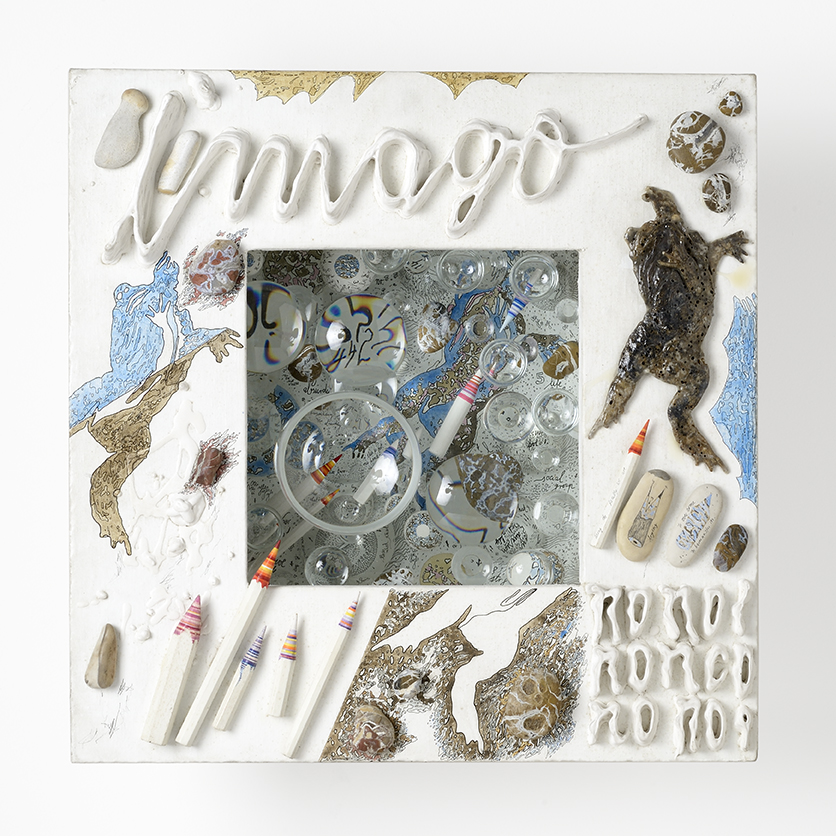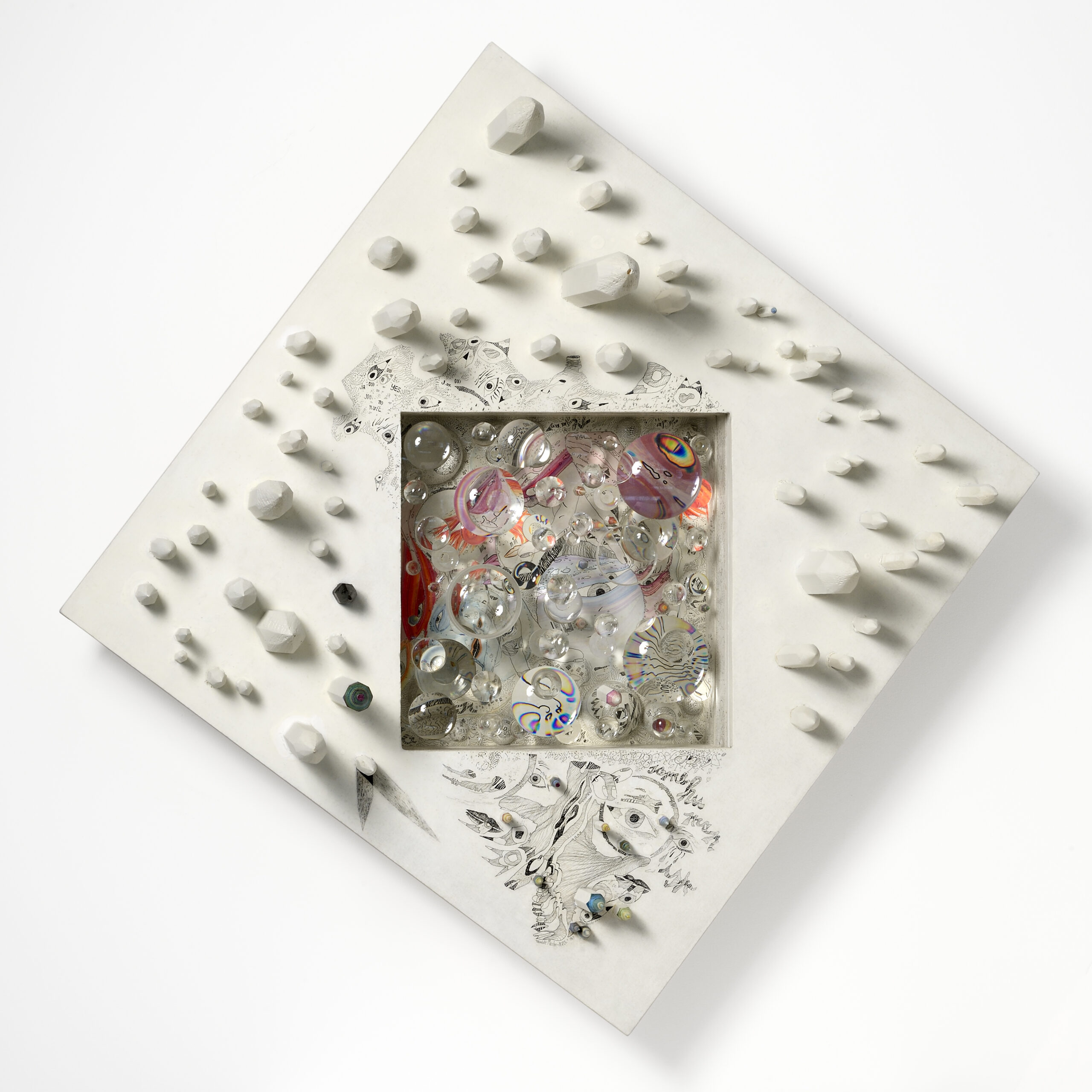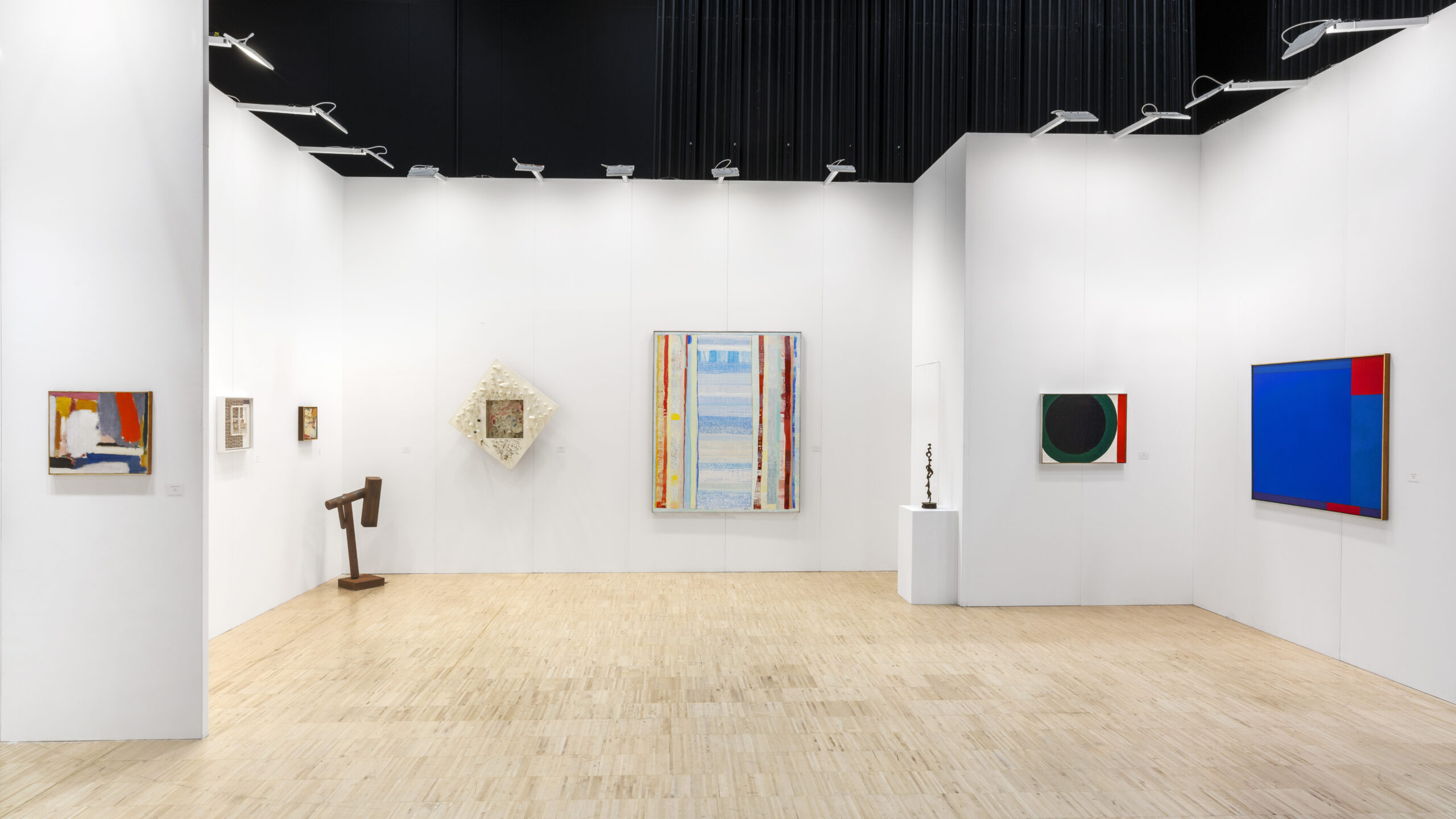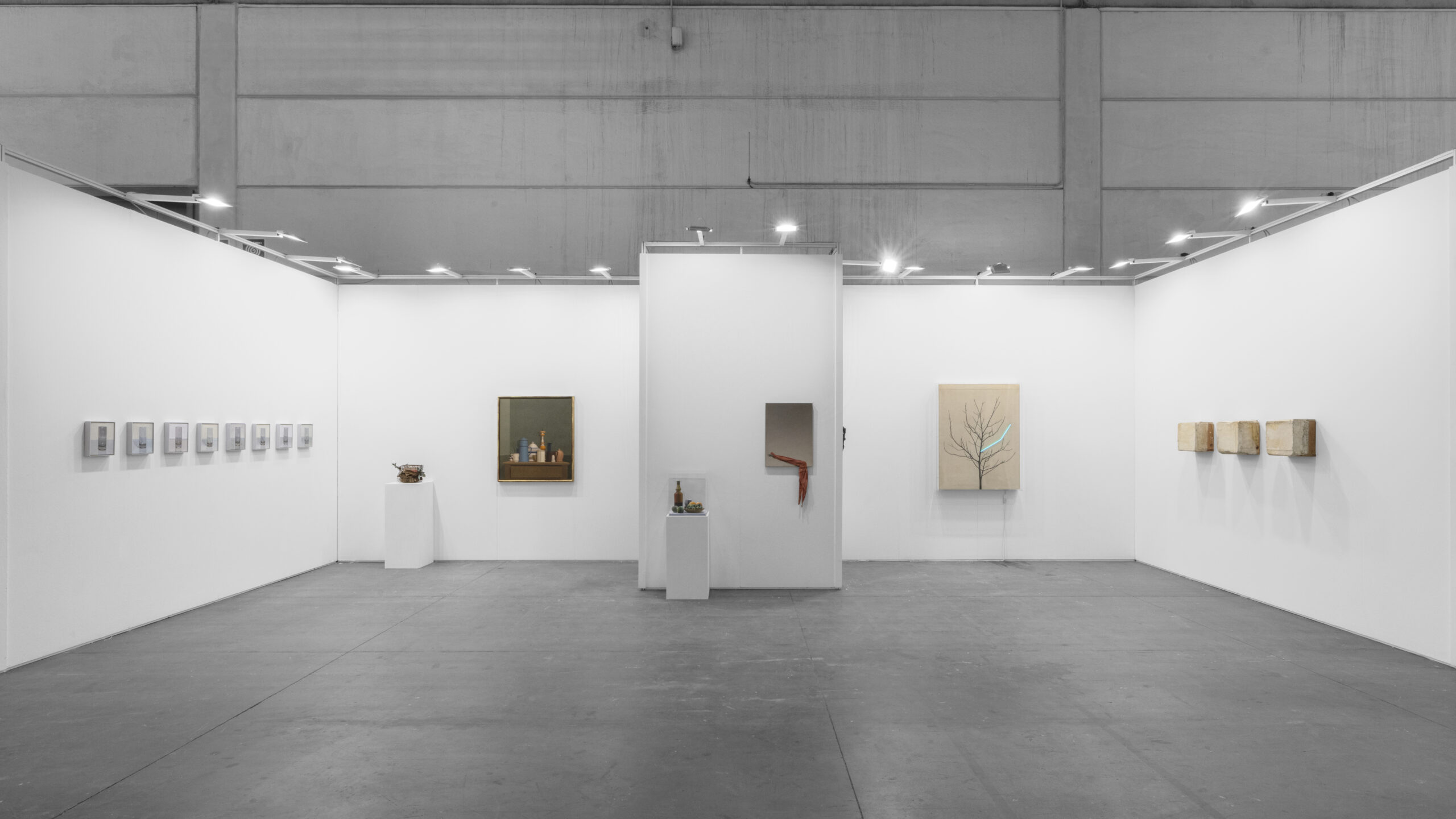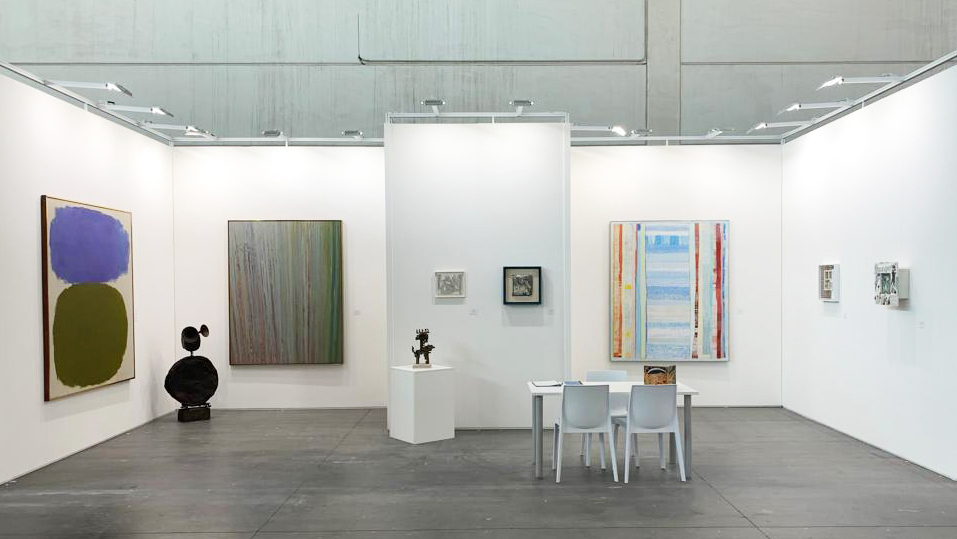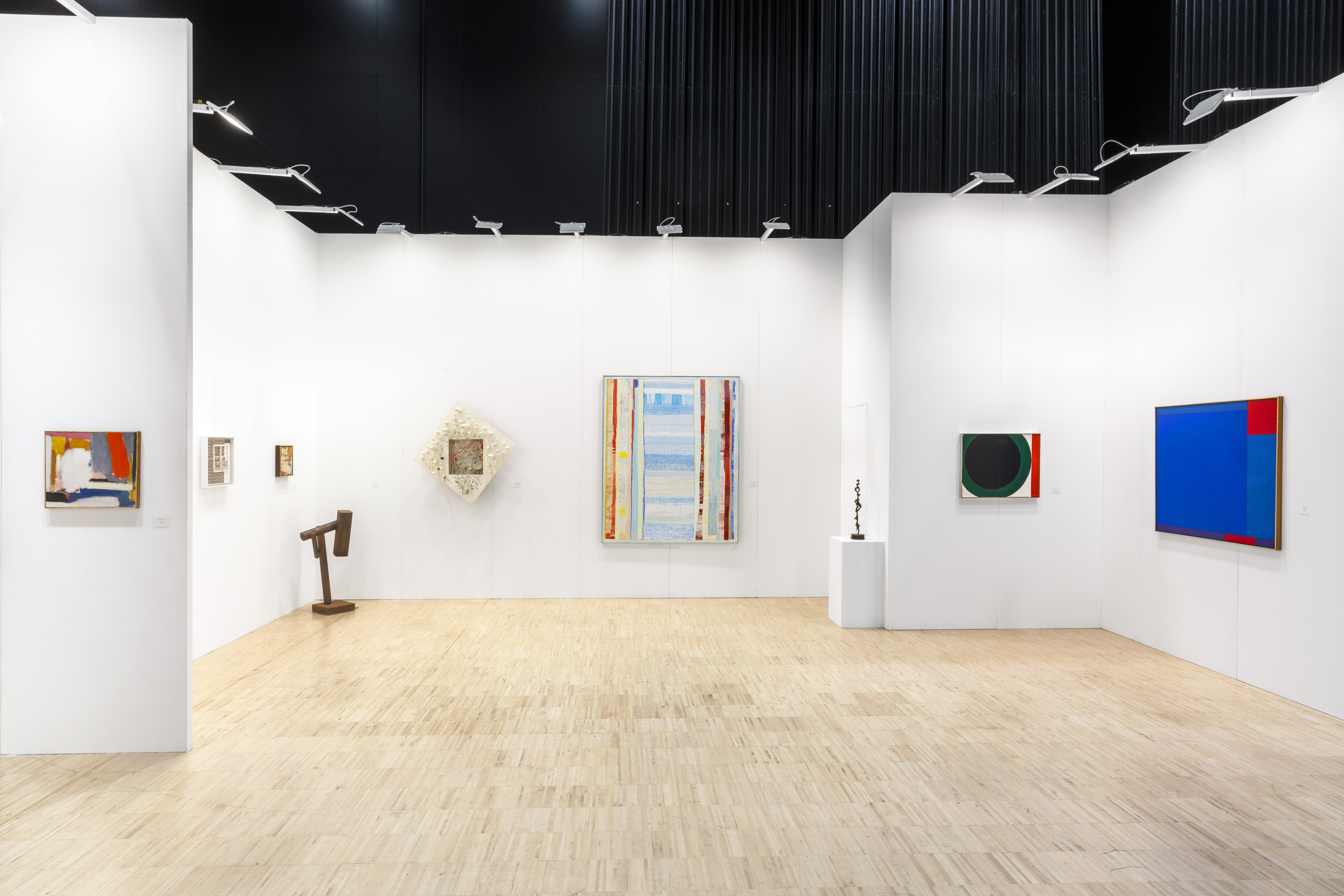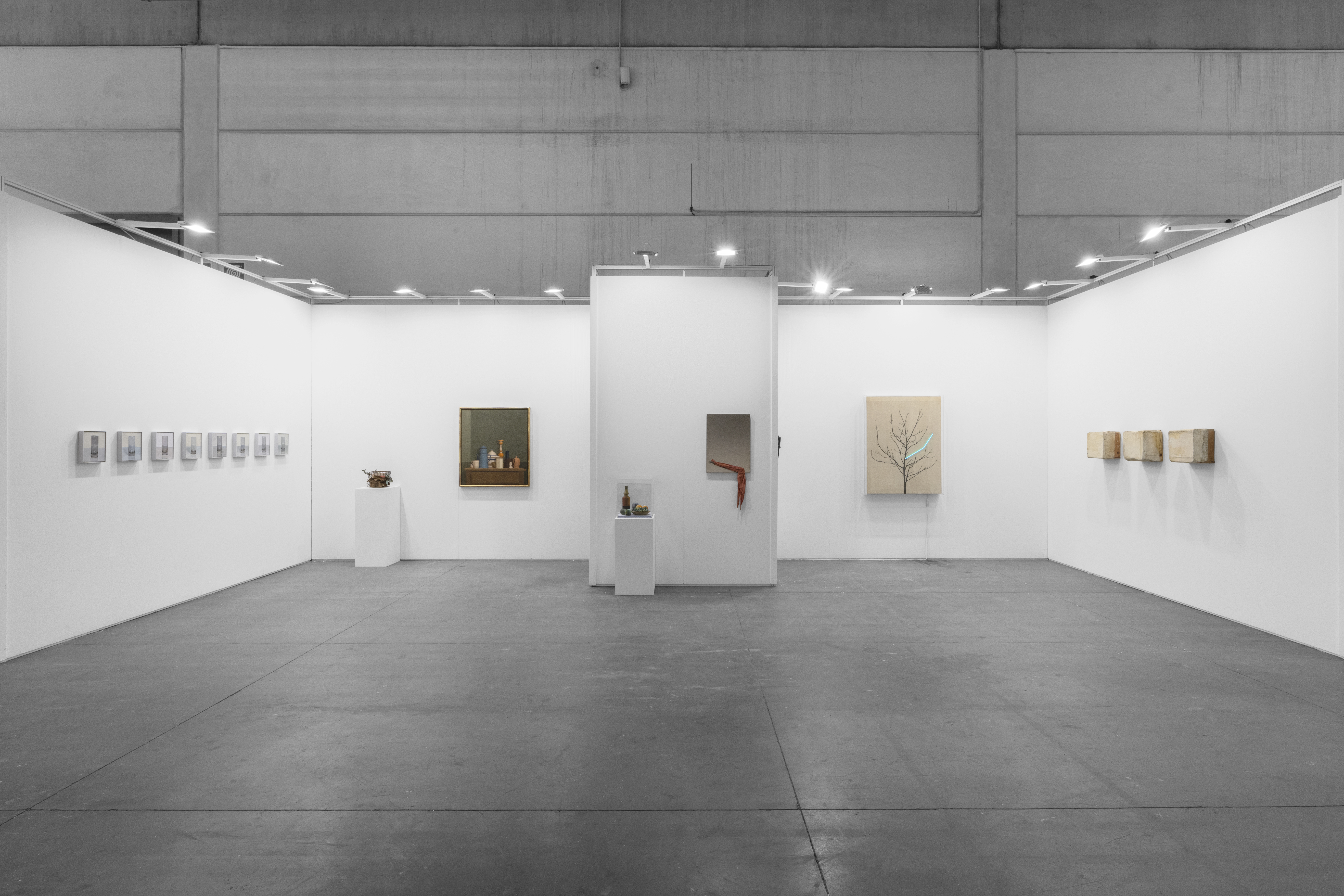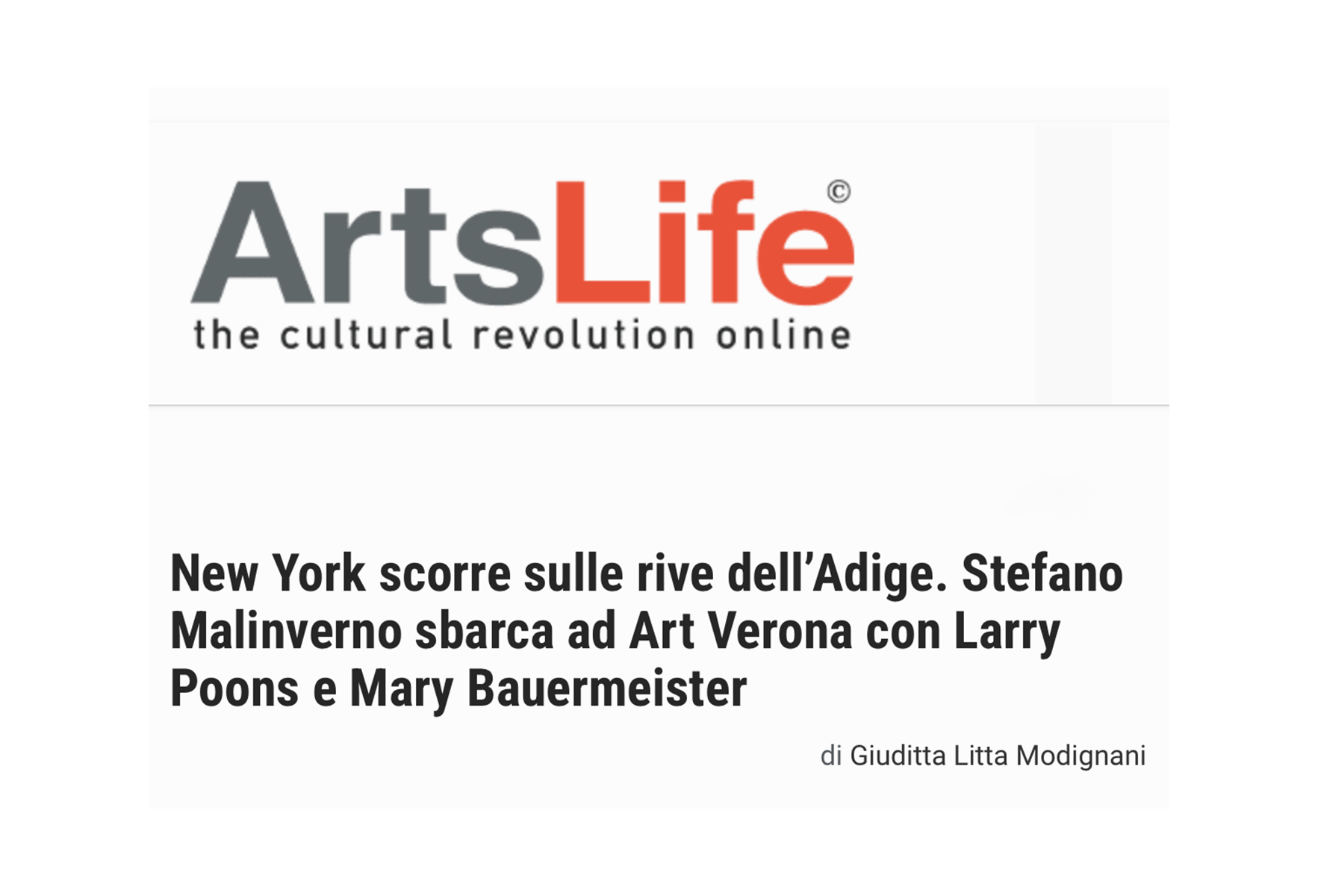I see art as a space for experimentation, where boundaries dissolve, and new worlds are discovered.
— Mary Bauermeister
I see art as a space for experimentation, where boundaries dissolve, and new worlds are discovered.
— Mary Bauermeister
Biography
Mary Bauermeister (1934–2023) was a pioneering German artist known for her role in the Fluxus movement and her innovative, interdisciplinary works.
Born in 1934 in Frankfurt and raised in Cologne, Bauermeister attended secondary school in Kalk, where her drawing teacher Günther Otto fostered her artistic talent. In 1954 she began her studies at the Hochschule für Gestaltung in Ulm, attending basic courses taught by Max Bill and Helene Nonné-Schmidt. Not being able to reconcile the school’s constructive orientation with her own ideas, she leaved Ulm after one semester and started to attend Staatliche Schule für Kunst und Handwerk in Saarbrücken as a student of Otto Steinert, where she experimented various photographic techniques. In 1956 she returned to Cologne and started to work as a free-lance artist to support herself.
In 1960 Bauermeister rented a flat in the attic of Lintgasse 28, in the heart of the Old Town of Cologne. The Atelier Bauermeister became a creative hub for avant-garde artists, musicians, and thinkers, including figures like John Cage and Nam June Paik. The intermedia events in the studio can be considered the first performances and provided the artists, who will later join to become the Fluxus movement, with major inspiration. In this period, Mary formed a close friendship with Karlheinz Stockhausen, who likewise participated in the studio concerts. In fact, in 1961, she attended Stockhausen’s composition course at the International Summer Courses for New Music in Darmstadt, where she composed her painterly conception, a painter’s score for action inspired in part by Stockhausen’s parameter concept, in which he deconstructed sound into separate, manipulable elements or “parameters” (such as pitch, duration, timbre, and intensity) to achieve more complex and layered compositions. Bauermeister’s work aligns with this idea through her use of layering, segmentation, and manipulation of materials to create a multi-dimensional, modular effect within a single piece.
In 1963 Mary signed a contract with Galeria Bonino in New York. She took part in the group exhibition 2 sculptors, 4 painters, and with Alfredo and Fernanda Bonino’s support she accomplished her breakthrough on the New York market.
In 1964 she had her first solo exhibition at Galeria Bonino, titled Mary Bauermeister – Paintings and Constructions, at which she presented, among other things, her first signature lens boxes. The following year, she had another solo exhibition, dedicated primarily to the lens boxes.
Towards the end of the 60’s, Bauermeister took part in numerous group exhibitions in U.S. and Europe.
In early 1970’s she took up primary residence in Rösrath, outside of Cologne, in a studio/house that she had built for herself in 1968.
In the late seventies she began to work with water surfaces, crystals and prisms, designing meditation gardens. Between 1984 and 1986, she designed gardens for the Kölnische Rückversicherung and the Federal German Foreign Office in Bonn.
In 1988, two of her works were included in the exhibition Return to the Object: American and European Art from the Fifties and Sixties, presented at the Guggenheim Museum in New York.
In the 90s and 2000s, Bauermeister continued to exhibit her work in important solo and group exhibitions, contributing to movements that questioned the boundaries of traditional art forms. She was celebrated for her ability to blend art with music, philosophy, and science, creating thought-provoking works that continue to inspire today.

Mary Bauermeister in N.Y.
